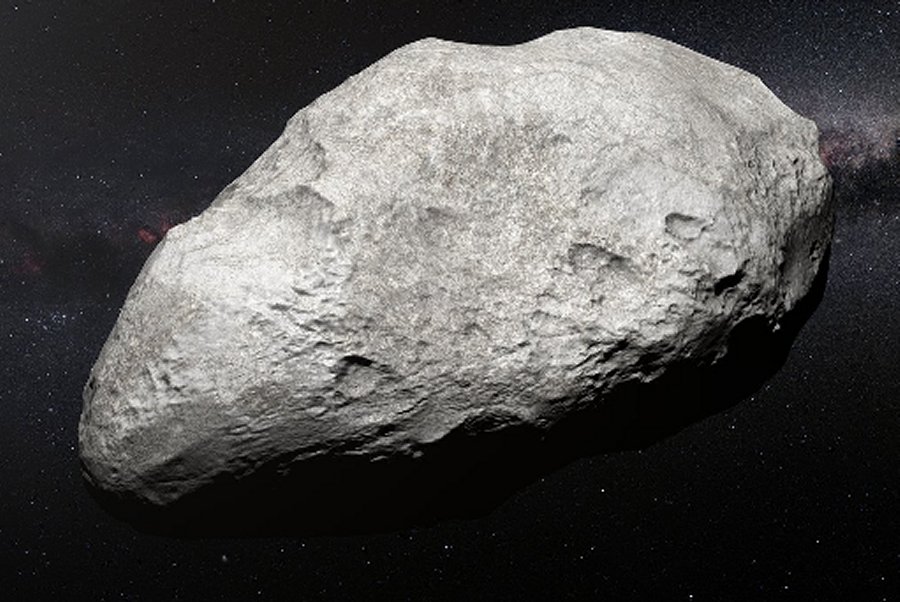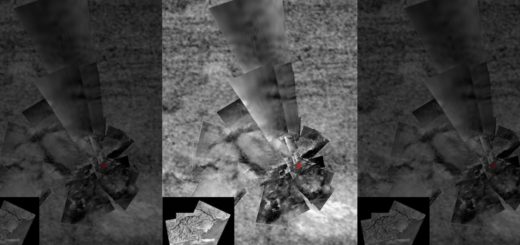First Unusual Carbon-Rich Asteroid Observed In Kuiper Belt
An unusual Kuiper Belt Object 2004 EW95 has been observed by an international team of astronomers using ESO telescopes.
The object is a carbon-rich asteroid, the first of its kind to be confirmed in the cold outer reaches of the Solar System.

Artist’s impression of exiled asteroid 2004 EW95 .Credit: ESO/M. Kornmesser
The curious object probably formed in the asteroid belt between Mars and Jupiter and has been flung billions of kilometers from its origin to its current home in the Kuiper Belt.
A small team of astronomers led by Tom Seccull of Queen’s University Belfast in the UK, made measurements using multiple instruments at ESO’s Very Large Telescope (VLT) and determined the composition of the anomalous Kuiper Belt Object 2004 EW95.
Now it is known the asteroid is carbonaceous and it originally formed in the inner Solar System and must have since migrated outwards. The asteroid’s reflectance spectrum — the specific pattern of wavelengths of light reflected from an object — was different to that of similar small Kuiper Belt Objects (KBOs), which typically have uninteresting, featureless spectra that reveal little information about their composition.
“The reflectance spectrum of 2004 EW95 was clearly distinct from the other observed outer Solar System objects,” explains lead author Tom Seccull. “It looked enough of a weirdo for us to take a closer look.”
Two features of the object’s spectra were particularly eye-catching and corresponded to the presence of ferric oxides and phyllosilicates. The presence of these materials had never before been confirmed in a KBO, and they strongly suggest that 2004 EW95 formed in the inner Solar System.
“Not only is 2004 EW95 moving, it’s also very faint,” says Seccull. “We had to use a pretty advanced data processing technique to get as much out of the data as possible.”
The team observed 2004 EW95 with the X-Shooter and FORS2 instruments on the VLT. The sensitivity of these spectrographs allowed the team to obtain more detailed measurements of the pattern of light reflected from the asteroid and thus infer its composition.
The peculiar nature of 2004 EW95 first came to light during routine observations with the NASA/ESA Hubble Space Telescope by Wesley Fraser, an astronomer from Queen’s University Belfast who was also a member of the team behind this discovery.
Theoretical models of this period predict that after the gas giants formed they rampaged through the Solar System, ejecting small rocky bodies from the inner Solar System to far-flung orbits at great distances from the Sun. The models also suggest that the Kuiper Belt — a cold region beyond the orbit of Neptune — should contain a small fraction of rocky bodies from the inner Solar System, such as carbon-rich asteroids, referred to as carbonaceous asteroids.
“Given 2004 EW95’s present-day abode in the icy outer reaches of the Solar System, this implies that it has been flung out into its present orbit by a migratory planet in the early days of the Solar System,” Seccull adds.


 Creators of mankind
Creators of mankind Description of “Tall white aliens”
Description of “Tall white aliens” Where they came from?
Where they came from? About hostile civilizations
About hostile civilizations The war for the Earth
The war for the Earth “Tall white aliens” about eternal life
“Tall white aliens” about eternal life Video: “Nordic aliens”
Video: “Nordic aliens” Aliens
Aliens Alien encounters
Alien encounters The aliens base
The aliens base UFO
UFO Technology UFO
Technology UFO Underground civilization
Underground civilization Ancient alien artifacts
Ancient alien artifacts Military and UFO
Military and UFO Mysteries and hypotheses
Mysteries and hypotheses Scientific facts
Scientific facts


















